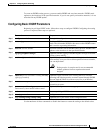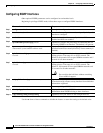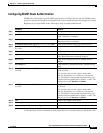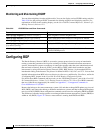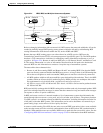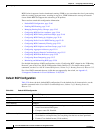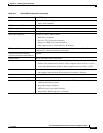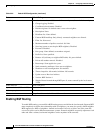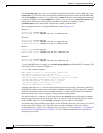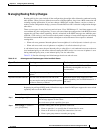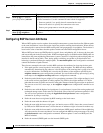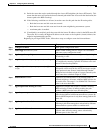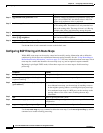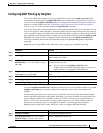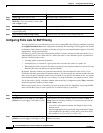
32-43
Cisco ME 3400 Ethernet Access Switch Software Configuration Guide
78-17058-01
Chapter 32 Configuring IP Unicast Routing
Configuring BGP
The switch supports the use of private AS numbers, usually assigned by service providers and given to
systems whose routes are not advertised to external neighbors. The private AS numbers are from 64512
to 65535. You can configure external neighbors to remove private AS numbers from the AS path by using
the neighbor remove-private-as router configuration command. Then when an update is passed to an
external neighbor, if the AS path includes private AS numbers, these numbers are dropped.
If your AS will be passing traffic through it from another AS to a third AS, it is important to be consistent
about the routes it advertises. If BGP advertised a route before all routers in the network had learned
about the route through the IGP, the AS might receive traffic that some routers could not yet route. To
prevent this from happening, BGP must wait until the IGP has propagated information across the AS so
that BGP is synchronized with the IGP. Synchronization is enabled by default. If your AS does not pass
traffic from one AS to another AS, or if all routers in your autonomous systems are running BGP, you
can disable synchronization, which allows your network to carry fewer routes in the IGP and allows BGP
to converge more quickly.
Beginning in privileged EXEC mode, follow these steps to enable BGP routing, establish a BGP routing
process, and specify a neighbor:
Command Purpose
Step 1
configure terminal Enter global configuration mode.
Step 2
ip routing Enable IP routing (required only if IP routing is disabled).
Step 3
router bgp autonomous-system Enable a BGP routing process, assign it an AS number, and
enter router configuration mode. The AS number can be from
1 to 65535, with 64512 to 65535 designated as private
autonomous numbers.
Step 4
network network-number [mask network-mask]
[route-map route-map-name]
Configure a network as local to this AS, and enter it in the BGP
table.
Step 5
neighbor {ip-address | peer-group-name}
remote-as number
Add an entry to the BGP neighbor table specifying that the
neighbor identified by the IP address belongs to the specified
AS.
For EBGP, neighbors are usually directly connected, and the IP
address is the address of the interface at the other end of the
connection.
For IBGP, the IP address can be the address of any of the router
interfaces.
Step 6
neighbor {ip-address | peer-group-name}
remove-private-as
(Optional) Remove private AS numbers from the AS-path in
outbound routing updates.
Step 7
no synchronization (Optional) Disable synchronization between BGP and an IGP.
Step 8
no auto-summary (Optional) Disable automatic network summarization. By
default, when a subnet is redistributed from an IGP into BGP,
only the network route is inserted into the BGP table.
Step 9
bgp fast-external-fallover (Optional) Automatically reset a BGP session when a link
between external neighbors goes down. By default, the session
is not immediately reset.
Step 10
end Return to privileged EXEC mode.
Step 11
show ip bgp network network-number
show ip bgp neighbor
Verify the configuration.
Step 12
copy running-config startup-config (Optional) Save your entries in the configuration file.



